Largeflower bellwort (
Uvularia grandiflora) is a beautiful, medium-size, shade-tolerant perennial that will delight you with its bright yellow flowers and upright form. This easy-to-grow, reliable native plant is a nice alternative to daffodils and other imported spring bulbs, especially if you are looking for something to add to an existing woodland edge on your property.
The flowers are an important source of nectar and pollen for bees active in early spring. Sit quietly by a flowering plant on a warm spring afternoon and watch for both large and small bees visiting the flowers. The bees are easy to miss if you’re just walking by, as they are often hidden in the nodding flowers as they forage.
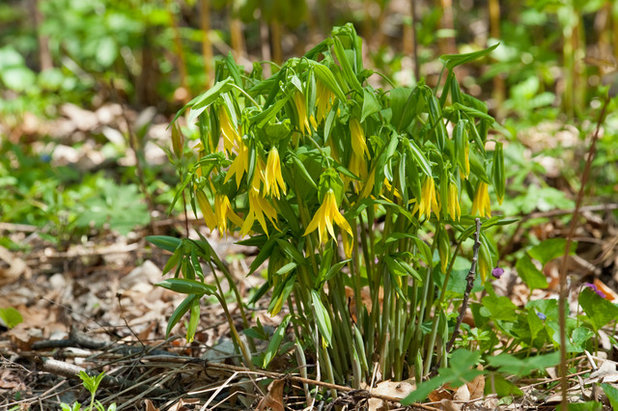
Holm Design & Consulting LLC
Botanical name: Uvularia grandifloraCommon names: Largeflower bellwort, large-flowered bellwort
Origin: Bellwort occurs in eastern North American woodlands, from North Dakota eastward to New Hampshire and southward to Oklahoma in the west and Georgia in the east; it is absent from Maine and the Atlantic provinces in Canada but does occur in Manitoba, Ontario and Quebec in Canada.
Where it will grow: Hardy to -45 degrees Fahrenheit (USDA zones 2b to 7b; find your zone)
Typical plant communities: Moist to mesic deciduous woodlands
Soil requirement: Moist to medium-dry (mesic-dry), sandy-loam to clay-loam soil
Light requirement: Shade to partial shade
Mature size: 8 to 18 inches tall and 10 inches wide
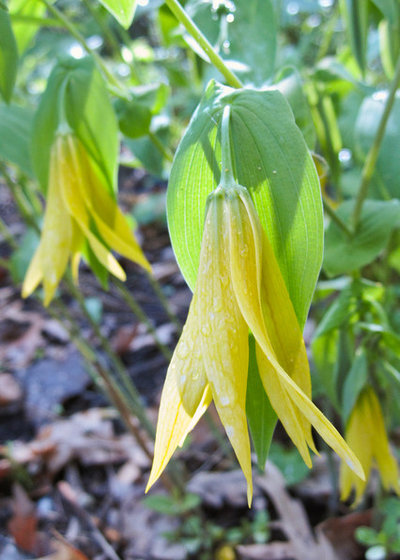
Holm Design & Consulting LLC
Benefits and tolerances: Tolerates most soils; prefers woodlands with an ample amount of humus and leaf litter
Seasonal interest: Upright flower stalk clusters grow rapidly as the soil temperatures warm in spring, revealing bright yellow nodding, twisted flowers in April or May.
When to plant: Spring or fall; bare-root or potted plants are available from many native plant nurseries
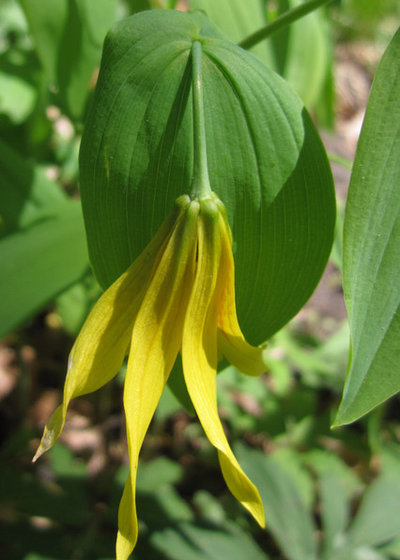
Holm Design & Consulting LLC
Distinguishing traits. The flower stalk appears to pierce through the leaf, similar to an earring. The large, showy yellow flowers have twisted petals that hang downward. The flowers last around two weeks and provide splashes of yellow in a woodland or shade garden. The round, smooth leaves are often light green to blue-green.
How to use it. Largeflower bellwort can be used in any shady location under deciduous trees. Combine it with other spring-flowering, medium-height woodland perennials, including May apple (
Podophyllum peltatum), baneberry (
Actaea spp), early meadow rue (
Thalictrum dioicum) and Jacob’s ladder (
Polemonium reptans).
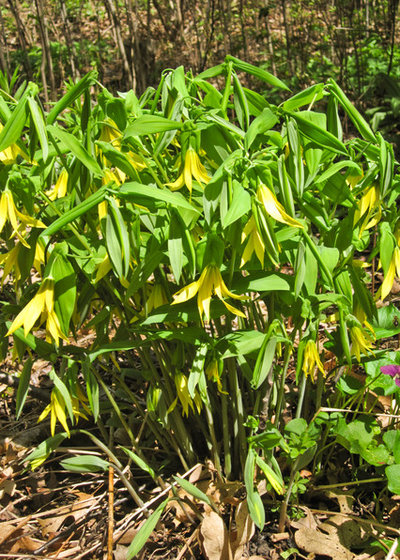
Holm Design & Consulting LLC
Planting notes. Largeflower bellwort is clump forming, and mature clumps slowly spread outward by rhizomes. Large, mature clumps can be divided after flowering and replanted. As with many spring-flowering woodland plants, the seeds are best sown immediately when mature so that they don’t dry out. Seeds typically mature 45 to 60 days after flowering.
Plants should be protected from deer browsing; look for the shoots emerging in spring and place a chicken wire enclosure around the plant. Several sticks enclosing the shoots also work well. A dense planting of many kinds of plants together can help to deter deer browsing, as the foliage from other plants helps to hide the emerging shoots.
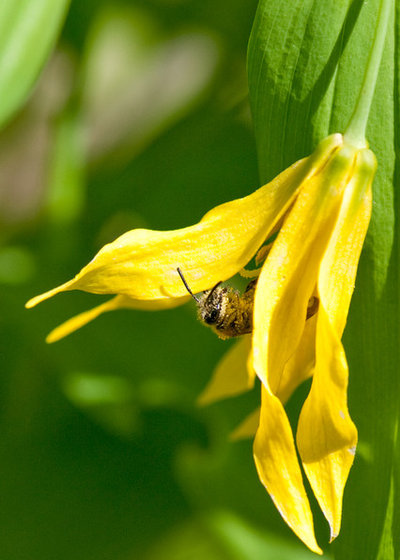
Holm Design & Consulting LLC
Pollinator notes. Unlike other spring-flowering woodland native plants, largeflower bellwort has flowers that produce nectar. You will likely observe more foraging by female bees, who feed on nectar and collect pollen on their foraging trips. Male bees will patrol the area around the flowers looking for appropriate mates but will rarely show interest in visiting the flowers.
Shown: A female mining bee (
Andrena sp)
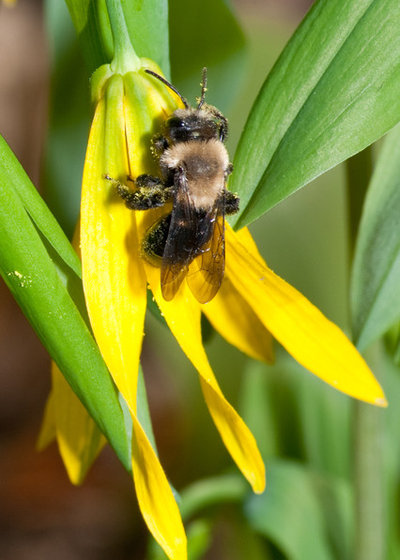
Holm Design & Consulting LLC
Mining bees are very common visitors to bellwort flowers. Females crawl up inside the nodding flowers and often emerge coated with pollen, as shown here.





